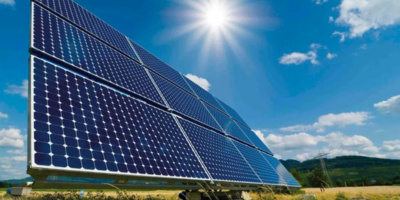Understanding Solar Power System: A Complete Guide for Clean Energy Solutions

As the world shifts toward sustainable energy sources, the solar power system has emerged as a revolutionary solution for reducing electricity bills, decreasing carbon footprints, and achieving energy independence. Whether for residential, commercial, or industrial use, solar power offers an eco-friendly and cost-effective alternative to traditional fossil fuels.
What is a Solar Power System?
A solar power system is a technology setup that converts sunlight into electricity using photovoltaic (PV) panels. These systems can either be grid-connected, off-grid, or hybrid. The main components of a typical solar system include solar panels, inverters, batteries (optional for storage), charge controllers, and mounting structures.
1. Solar Panels
Solar panels are the heart of the system. They capture sunlight and convert it into direct current (DC) electricity. Made from semiconductor materials like silicon, these panels are typically installed on rooftops or open land to maximize sun exposure.
2. Inverter
Since most home and industrial appliances run on alternating current (AC), the DC power generated by solar panels is sent to an inverter, which converts it to usable AC power.
3. Battery Storage (Optional)
For off-grid or hybrid systems, batteries store excess electricity generated during the day for use at night or during power outages. While optional for grid-connected systems, battery storage enhances energy reliability.
4. Charge Controller
This device regulates the voltage and current coming from the solar panels to prevent battery overcharging or discharging too quickly.
5. Mounting Structure
These are the frames or stands that hold the solar panels in place. They are designed to optimize the panel angle for maximum sunlight absorption and withstand weather conditions.
Types of Solar Power Systems
- On-Grid System
Also known as a grid-tied system, it is connected to the main electricity grid. Any excess energy generated can be sent back to the grid, and the user is credited through net metering. - Off-Grid System
These systems are completely independent of the grid and rely on batteries for power storage. They are ideal for remote areas where grid access is limited or unavailable. - Hybrid System
A combination of on-grid and off-grid systems, hybrid systems are connected to the grid but also have battery backup. They provide flexibility, allowing users to store energy and draw from the grid when needed.
Benefits of a Solar Power System
- Eco-Friendly: Solar energy is clean, renewable, and emits no greenhouse gases during operation.
- Cost Savings: Over time, users can see a significant reduction in electricity bills.
- Low Maintenance: Solar systems require minimal maintenance, mostly just occasional cleaning and system checks.
- Energy Independence: Reduces dependence on utility companies and fossil fuels.
- Increases Property Value: Homes with solar installations often have higher resale values.
Solar Incentives and Government Support
Many governments across the world, including India, offer subsidies, tax credits, and incentives for installing solar power systems. These benefits significantly reduce the upfront installation cost and make solar adoption more affordable. For example, in India, the Ministry of New and Renewable Energy (MNRE) provides up to 40% subsidy for residential solar rooftop installations.
Choosing the Right Solar Power System
When selecting a solar system, consider your energy needs, location, roof size, budget, and local climate conditions. It’s essential to work with a certified solar installer who can assess your site and design a system tailored to your requirements.
Conclusion
A solar power system is not just a green energy solution—it’s a smart investment for the future. As energy prices rise and environmental concerns grow, switching to solar helps save money and protect the planet. Whether you’re looking to reduce your carbon footprint or achieve energy independence, now is the perfect time to harness the power of the sun. Install a solar system today and be a part of the clean energy revolution.





